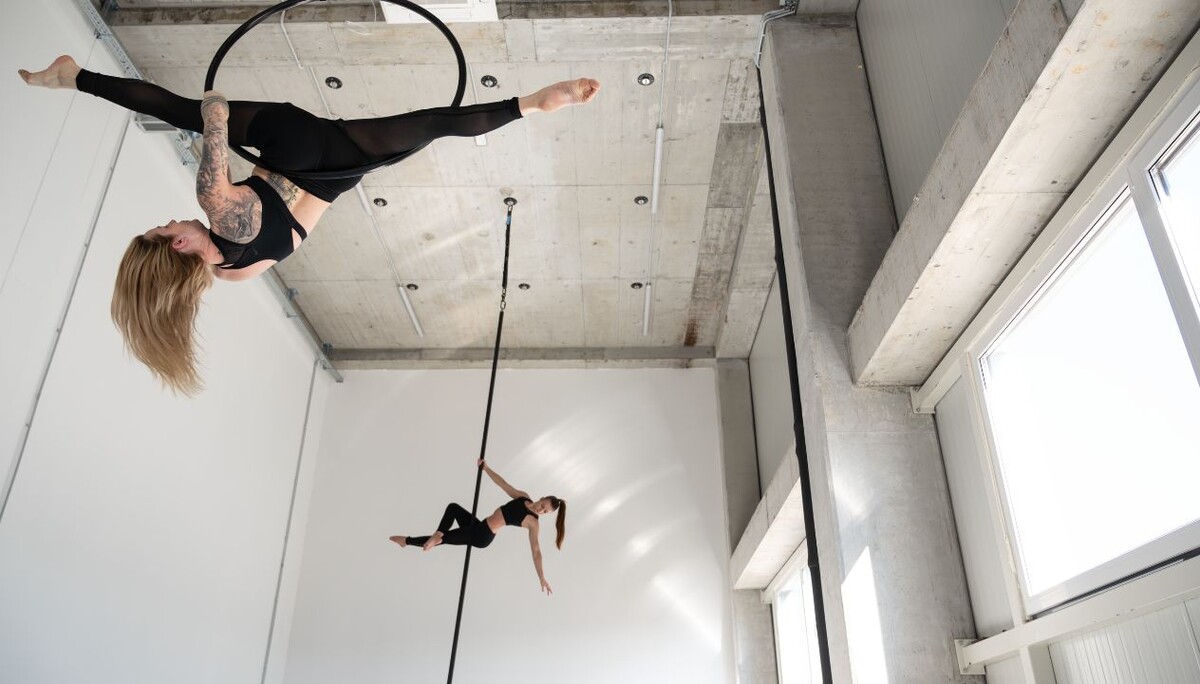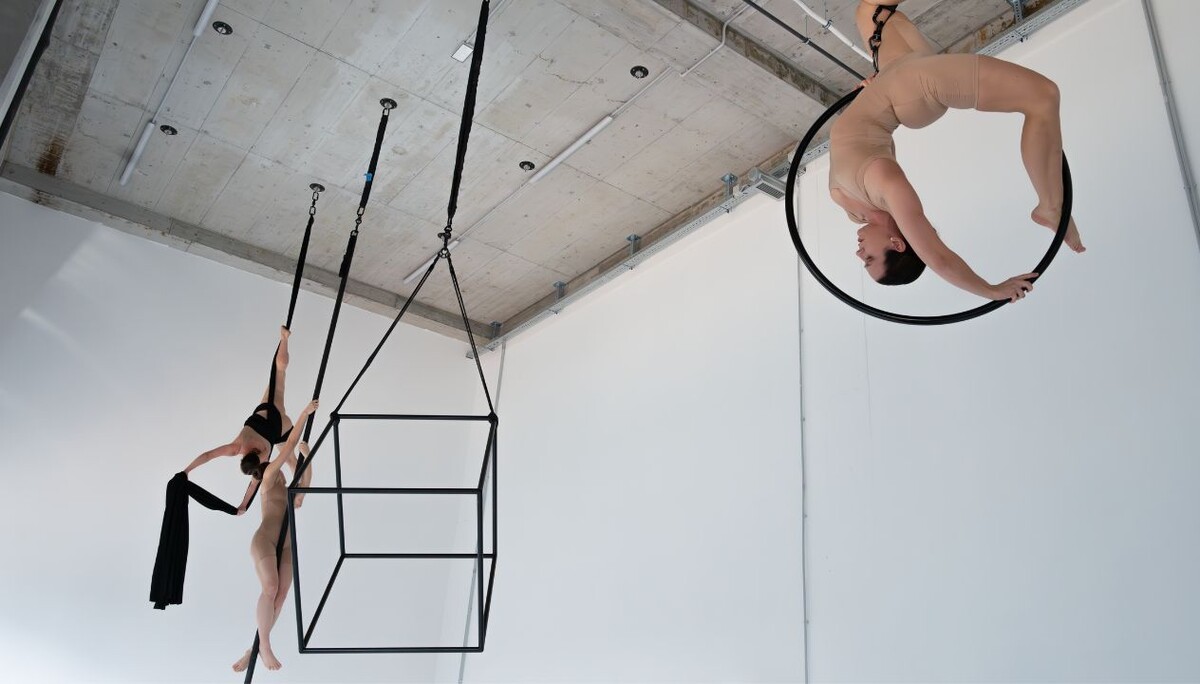
LUPIT pole
Jun 17 - 6 min read


Discover the exhilarating world of flying pole dance—a dynamic blend of aerial acrobatics and strength that takes traditional pole dancing to breathtaking heights. This comprehensive guide delves into the essentials of the sport, from the specialized equipment and rigorous safety measures to the profound physical and mental benefits it offers. Learn how to get started, what to expect, and how to train safely. Whether you're a beginner or an experienced dancer, prepare to be inspired by the boundless possibilities of flying pole dance. Explore more and take your fitness journey sky-high!
Originating as a unique extension of pole dancing and aerial arts, this form incorporates a suspended pole that moves and rotates, allowing dancers to soar through the air. Unlike stationary poles, flying poles require immense strength, flexibility, and coordination to master graceful, acrobatic manoeuvres. Performers seamlessly blend aerial tricks, swings, and spins in a captivating display that combines athletic prowess with artistic elegance.
Get ready to explore a thrilling journey that takes pole fitness beyond the ground level.
Flying pole dancing relies on specialized equipment crafted to prioritize safety and seamless performance. Here’s a breakdown of the essential components:

These elements work together to create a unique aerial experience that enables fluid motion, maximum safety, and limitless artistic expression in flying pole dance.
Flying pole dancing offers a comprehensive workout, benefiting the body and mind.
Physically, this art form combines aerial acrobatics, dance, and strength training, leading to a full-body workout that targets multiple muscle groups. The dynamic nature of flying pole dancing requires significant upper body and core strength, as performers must lift their own body weight while maintaining balance. Over time, regular practice enhances muscle tone, strength, and endurance, while dynamic movements improve flexibility, joint mobility, and coordination.
Cardiovascular health is also a significant benefit. The combination of continuous motion, aerial spins, and gravity-defying manoeuvres keeps the heart rate elevated, providing an effective cardio workout that helps improve stamina and overall fitness. The need to stabilize the body while flying through the air challenges balance, leading to increased agility and proprioception.

The mental and emotional benefits are equally compelling. The practice of flying pole dancing requires intense concentration and focus, which helps clear the mind and relieve stress. Learning and perfecting new tricks promotes a sense of accomplishment that directly boosts self-confidence. Additionally, the creative freedom of choreographing routines or experimenting with different moves fosters self-expression and creativity, contributing to an improved mood.
For many, the supportive community around flying pole dancing provides a sense of belonging and encouragement, making it easier to stay motivated and inspired. In summary, flying pole dancing offers a holistic approach to fitness, empowering individuals to build strength, flexibility, and confidence while embracing the joy and freedom of movement.
Beginners keen to explore flying pole dancing should follow these guidelines to embark on a safe and successful journey:
By following these comprehensive tips, beginners can build a solid foundation and work towards mastering the art of flying pole dancing safely and effectively.
Flying pole safety is paramount, given its aerial nature and the unique challenges it presents. Proper instruction is crucial. Beginners should seek certified instructors with a strong background in aerial arts and experience in teaching flying pole dancing. These professionals provide structured guidance to minimize risk, correct form, and prevent accidents. They can also identify and reinforce key fundamentals that help reduce injury.
The use of safety crash mats is essential in protecting against falls. These cushioned mats provide a safety net beneath the pole, reducing the impact of accidental slips and drops during practice.

Equally important is ensuring that the rigging and pole are securely mounted. Rigging points should be thoroughly inspected for wear and tear, and any mounting equipment must adhere to safety standards. Checking these components before each session is vital.
Spotting techniques can help dancers build confidence while learning new moves and mitigate the risk of injury. Having an experienced partner spot, guide, or stabilize a performer adds an extra layer of protection. Additionally, gradual progression is key to injury prevention. Dancers should avoid advancing to complex moves too quickly, instead building a foundation of strength, flexibility, and basic aerial maneuvers first.
Ultimately, by prioritizing proper instruction, equipment, and careful progression, flying pole dancers can enjoy their art form while maintaining safety as a top priority.